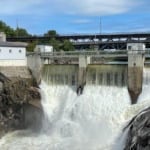This powerful regulated waterfall on the edge of Sarpsborg has long been harnessed for its energy. It's one of the most powerful in Europe.
Recently I took a trip to Sarpsborg. A small town about 90km south of Oslo and close to the Swedish border, Sarpsborg had never been on my radar. It was time to explore.
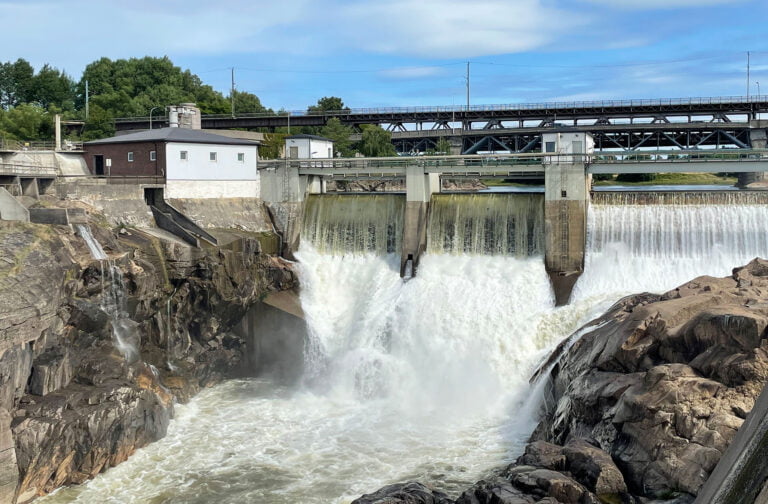
I had some spare time, so after a quick Google search for things to do in Sarpsborg, I found an interesting sounding waterfall less than half an hour’s walk from the town centre.
Most of Norway’s best waterfalls are beautiful, slender falls often on the side of fjords or tumbling down from high mountainsides. Sarp Falls is a regulated waterfall known for its sheer power. In fact, it’s one of the most powerful in all of Europe.
It’s also known for its industrial heritage, important both locally and nationally. Hydropower in Norway has long been a critical source of energy. Three power stations are located at the falls, providing immense power to the local area.
Introducing Sarp Falls
Sarp Falls is the last waterfall along the Glomma, the longest river in Norway. In terms of discharge, Sarp Falls is the second largest waterfall in Europe after Germany’s Rhine Falls.
Water flow varies throughout the year, but averages out at approximately 577 cubic metres per second. That’s about 20,4000 cubic feet per second. And remember, that’s just an average, it can get a lot more powerful. Whoosh. The only way to truly appreciate it is with a quick video:
There are three power stations at the falls owned by Borregaard, Hafslund and Sarp. Borresgaard alone provides energy to more than 25,000 households.
Over the years, industrialists have built substantial facilities on either side of the falls, including workers’ housing, country mansions and grounds. Today, the entire area is a snapshot of Norway’s industrial heritage.
Walking to Sarp Falls
It’s possible to take a bus to the falls, but it’s an easy and enjoyable walk. Once through the suburban streets, there is a main road that leads to the waterfall.
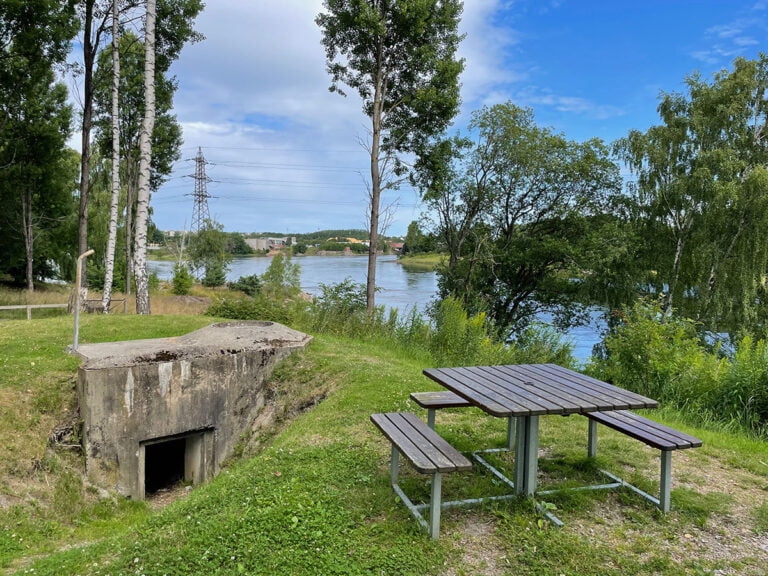
However, a riverside trail is a much nicer walk and introduces you to some of the industrial heritage and history of Sarpsborg along the route.
One notable sight is these brick houses that I immediately thought must be British in some way. Indeed, an information board confirmed they were built by Englishman Robert Foster for the British owners of Borregaard.
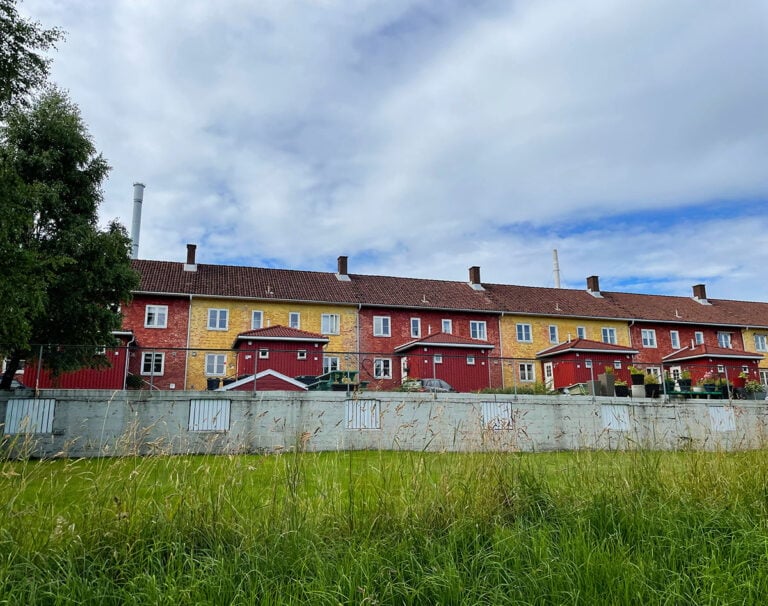
Viewing Sarp Falls
Once you get to the river it’s not immediately obvious where the best viewpoints are. One is relatively easy to spot. There is a large viewing platform across the main road from the footpath. While the view here of the industrial area and river is good, it’s difficult to see much of the falls.
To get the best view of the falls, you need to cross the river on the road bridge and then head down on the footpath towards the Hafslund power station. Here there is a walkway to the best viewpoint.
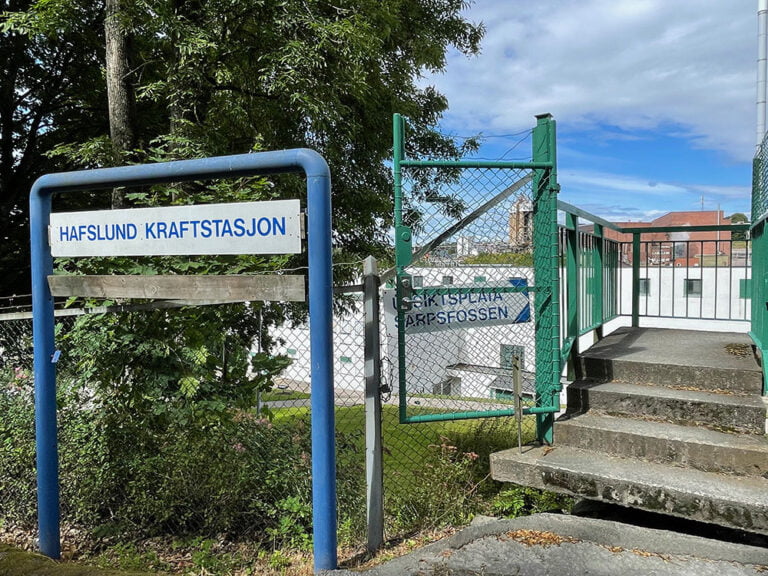
The viewpoint is signed (utsikrsplata) but is hard to see behind the gate, so just look out for the ‘Hafslund Kraftstasjon’ sign.
History of Sarp Falls
According to the information signs, the power of the waterfall has been harnessed for hundreds of years. Originally the power was exploited for use in pulp and paper mills, an industry which helped Sarpsborg grow.
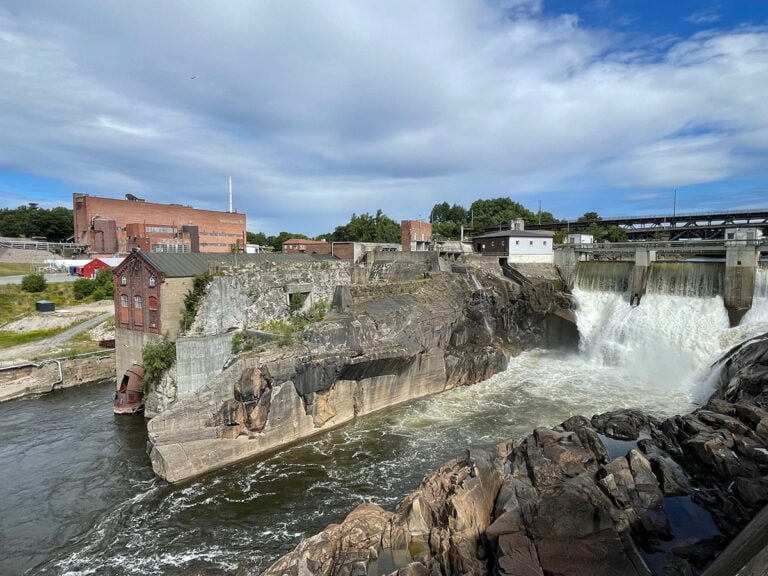
It wasn’t until 1899 when the excess power was repurposed for electricity. This power output eventually led to Sarpsborg and Fredrikstad becoming electrified at the turn of the 20th century.
River surfing at Sarp Falls
The power of the falls creates waves farther downstream in the Glomma river. At certain times of the year, river surfing and kayaking are popular activities about 2km downstream from the waterfall.
The wave appears when the flow rate of the waterfall is above 800-900 m3/s. Latest flow numbers are available on the website of the utility owners' association. However, this is no place for beginners as the currents are strong.

